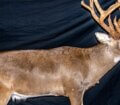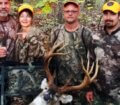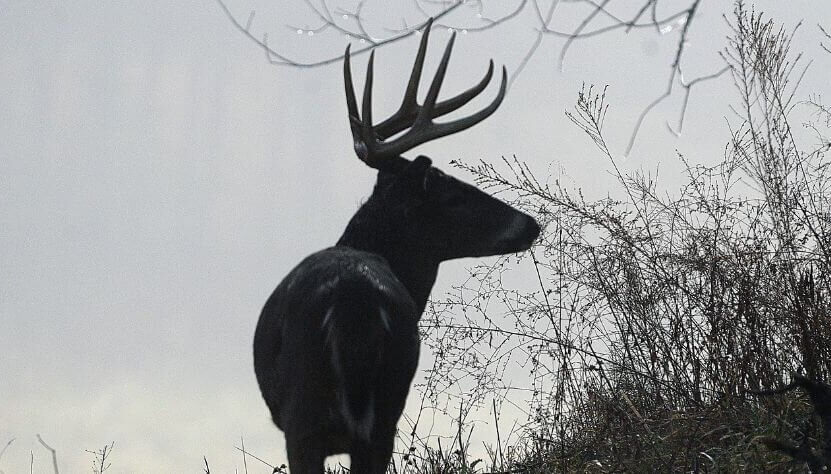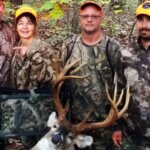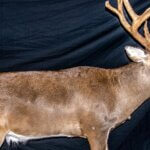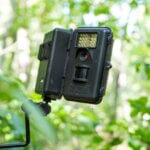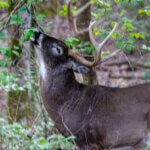Editor’s Note: Michael Perry of Vinemont, Alabama, a longtime, successful public-land hunter, says, “I don’t want to give the impression that I think I know everything there is to know about how to hunt and take mature public-land bucks successfully. However, my family has been hunting public lands for over 50 years and has taken some nice, older bucks. I’ve learned how to scout to find these mature bucks, how and when to hunt them and get older, heavy, well-racked bucks out of remote areas. Most of the big bucks I’ve taken on public lands, I’ve never even seen before until I’ve squeezed the trigger on my mechanical release, my muzzleloader, or my granddaddy’s .30-06 Mauser.
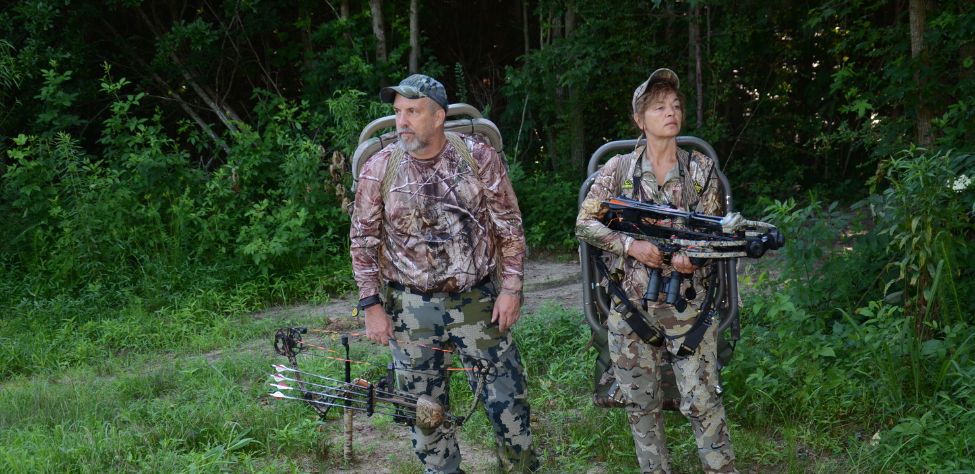
“In the 2021 deer season, I took a buck scoring 195-6/8 inches on a state WMA. In 1998, my brother Matthew had taken a 180-1/8 inch public-land buck. And a friend of my dad’s took a 170-inch buck in the 1970s on public lands. Over the years, I’ve taken 38 public land bucks, 8 points or better. I’ve kept meticulous records in my journals about how we’ve hunted these bucks, where we’ve hunted, and what has made us successful in taking older-age-class bucks on public lands. I hope my information will help you learn tactics to become more successful on the public lands you hunt in any state.”
“On November 5, 2021, my wife, Kathy, went hunting with me,” Michael Perry explains. “We walked about 1.5 miles away from our vehicle before daylight and crossed several high ridges, moving through thick brush before arriving at Kathy’s stand, about 45 minutes away from my stand. I still planned to reach my stand, 19 feet up in a tree and 25 feet above the bench on the mountain’s side, an hour before daylight.”
The first deer Perry saw that morning was a 7-pointer about 2 1/2 years old. He was walking along the edge of the bench and occasionally would stop and eat white oak acorns. The 7-pointer kept looking back from the way he’d come. Curious about what he might be watching, Perry studied that area behind him more intently and spotted a huge rack above the nearby foliage.
“Since I only could see the left side of the buck’s rack, I was unsure if he was the Bench Buck I’d captured before on camera,” Perry reports. “However, I knew this buck was big enough to be a shooter. The buck froze behind the bushes for perhaps 30 seconds. All I could see then were his hindquarters, so I held my shot until he stepped out from behind the heavy cover.
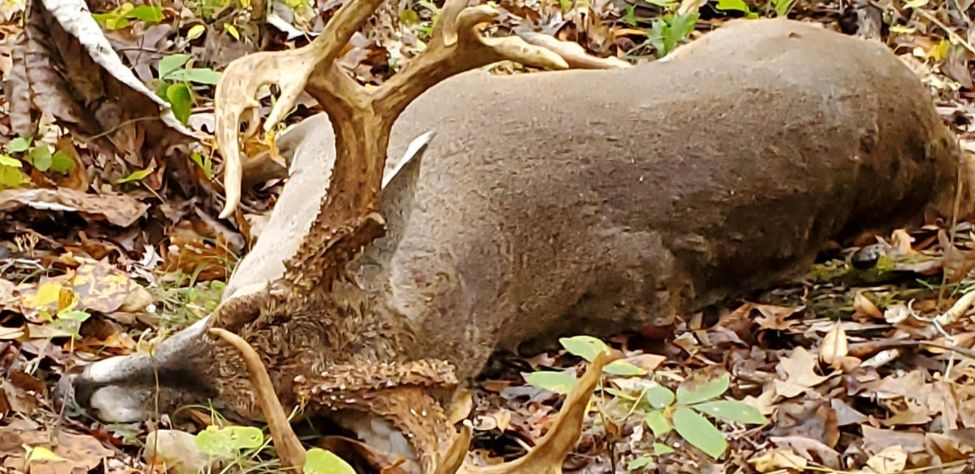
“I was shaken up emotionally because I finally might have the chance to take the biggest buck I’d ever seen. Although some of me was still unsure if he was the Bench Buck I’d identified on my trail camera, I was hopeful. I knew he’d either walk off or not give me a shot or give me the shot of a lifetime.”
Perry was hunting with his CVA Optima rifle loaded with 150 grains of Pyrodex pellets, pushing a 240-grain Barnes bullet. As he watched the giant buck through his Konus riflescope and finally calmed himself down, he stepped out from behind the cover, 45 yards away. Perry squeezed the trigger and fired. The buck’s white tail went straight up before he ran out of sight. A few moments later, Perry heard a limb crash but didn’t see the buck. He immediately reloaded his rifle. He’d learned years ago that when hunting with black powder, as soon as he shot, he needed to reload immediately. Then, if the buck came to an opening and presented a second shot, he could take it.
“I sat in the tree for almost 30 minutes after that to let the buck expire and to collect myself before climbing down,” Perry explains. “I was glad I was wearing my Hunter’s Safety System full body harness to make my descent safer. When I began climbing out of my tree stand, I accidentally kicked a plastic bottle full of water out of it that sounded like two freight trains colliding once it hit the ground. I realized that if the buck were still alive and heard that loud, explosive sound, he’d leave the area.
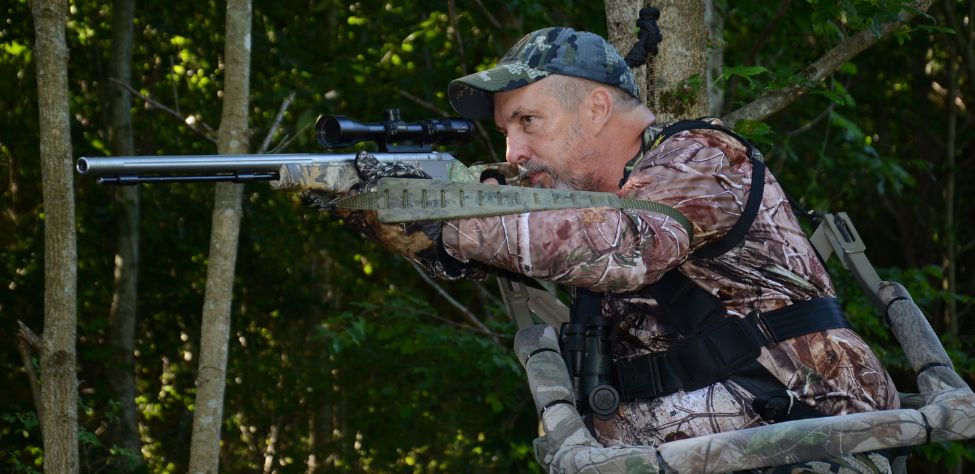
“Once I reached the ground, I went to where the gigantic buck stood when I took the shot. I couldn’t locate any blood or hair. I was worried about whether or not I’d hit the buck. I walked a gridline back and forth across the place where I thought the buck had been standing, searching for a blood trail. Then I came across a trail of blood that I followed for 25 yards to a beech tree that had portions of its bark skinned off. Examining the skinned marks, I was encouraged to also find blood on the same side of the tree.
“Noticing a small mound of dirt just past the beech tree, I walked up to it and saw the side of an immense buck’s huge rack. Immediately, I teared up and went into a full-blown cry. I never had taken a buck this size in my entire life. I sat beside the Bench Buck, filled with emotions, and thanked God for the opportunity to take this biggest buck I’d ever seen. The Bench Buck was huge, his neck was swollen from the rut, and his antlers were an unbelievable size.”
More of Michael Perry’s Scouting Tips:
- “I spend as much time as possible on the lands I hunt before, during, and after deer season, to learn as much as possible about the land and the bucks that may be available the next season.
- “I talk with wildlife biologists, taxidermists, and area managers to learn about each WMA’s deer herd and realize that what’s a mature buck on one WMA may not be the same as what’s the size of a mature buck on another WMA.
- “I identify the times of the ruts on each WMA I hunt and match the rut with the hunts being offered on each WMA.”
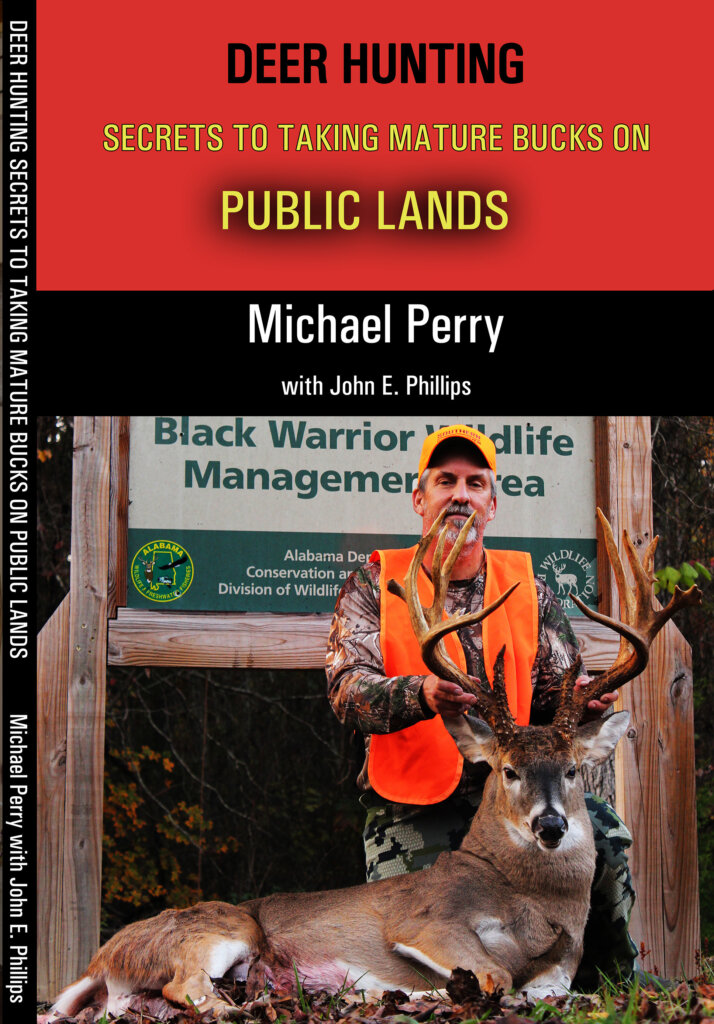

How to Hunt and Take Big Buck Deer on Small Properties
In this book, you’ll hear from 14 hunters who either have gained permission or leased properties as small as six acres to as much as 250 acres, and how they consistently take older-age-class bucks off these little lands.
VERSIONS: AUDIBLE, KINDLE & PRINT

Jim Crumley’s Secrets of Bowhunting Deer
Using a black magic marker and a gray work jumpsuit, Jim Crumley of Buchanan, Virginia, drastically changed the nature and purpose of hunting camouflage when he created the first sportsman’s camouflage – Trebark. Crumley’s love of bowhunting and his desire to be more invisible changed hunting clothing forever.
In this hunting guide, he shares the wisdom that he’s learned throughout his lifetime about how to be a hunter, how to find a deer lease, how to scout for deer, and more.
Special features include how to:
- Have a magic 60 acres to hunt
- Decide the best equipment to use
- Find deer year-round
- Locate land to hunt
- Know the best place to put your tree stand
- Get bucks within bow range
VERSIONS: AUDIBLE, KINDLE & PRINT

How to Hunt Deer Like a Pro
How do you know if the land you hunt has a trophy deer on it? Wildlife manager Bob Zaiglin, of Uvalde, Texas and Jim Crumley, the father of modern-day hunting camouflage, tells you how to find out. GPS can make finding and taking that trophy buck easier. This hunting guide will teach you how to hunt big bucks where no one else can find them, how to call deer, and how to become versatile as a deer hunter, so that if one deer tactic doesn’t work, another one will.
In the chapter, “How to find Bucks at Scrape,” Dr. Keith Causey, retired professor of Wildlife Science at Auburn University, describes the best way to hunt a scrape.
Brad Harrison of Neosho, Missouri, is a nationally-known videographer, professional deer hunter and master at calling deer. Another master is Will Primos of Primos Game Calls. These two experts will tell the best deer calls and when to use them in this book.
And for over 20 years, Bo Pitman, lodge manager of White Oak Plantation, has been studying deer movement patterns. He explains what types of conditions are best for predicting deer movement.
VERSIONS: AUDIBLE, KINDLE & PRINT

Deer hunting and deer hunters are drastically changing each year. To learn new techniques for hunting deer and have more places to hunt, I’ve interviewed some of the best deer hunters in the nation and share their tactics in How to Hunt Deer Like a Pro: Volume II.
In Chapter 10, Jacob Lamar tells you his tactics for consistently taking older-age-class bucks on public lands in several states. Chapter 11, Bob Walker explains how to find places on public lands where you can hunt that 99 percent of the other hunters never have considered hunting. The Bonus Chapter with David Ramey tells you how, where, when and with what equipment to take big Kansas bucks on public lands by hunting in 100-degree weather when others won’t hunt.
Chapter 13, Mark Drury, his family and his guests take mature bucks every season by having more small places to hunt rather than one large property. Drury explains the strategy of having satellite farms to hunt that only may be 50-150 acres each or less. Chapter 15, Pat Reeve, who hunts far-northern states and Canada, says, “I don’t like hunting for mature bucks until the weather is 20 degrees or less.” Chapter 4, Dr. Larry Marchinton says that funnels are the most-reliable stand sites to hunt for big bucks and tells why.
VERSIONS: AUDIBLE & PRINT
Tomorrow: Getting Big Public Land Deer Out

